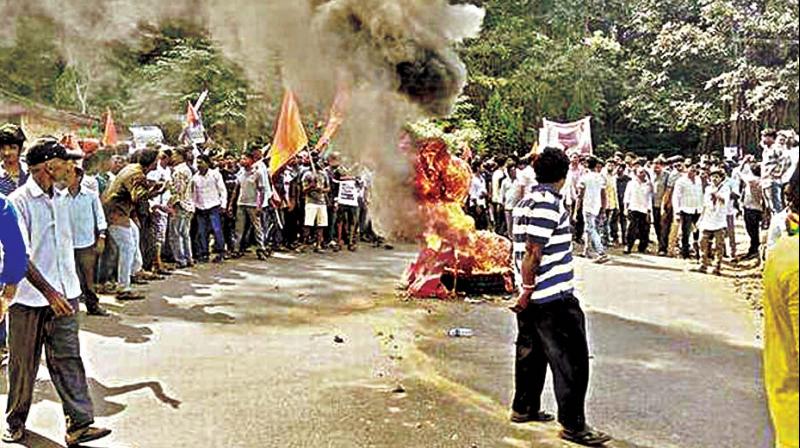The deadly politics of faith
There are countless instances of communal clashes instigated by the BJP and Sangh Parivar - all in the run-up to the elections.

India's communal underbelly, the source of much violence and bloodshed, is often a tool in the hands of wily politicians trying to secure votes. In the light of the recent violence at Honnavar, triggered by the death of 19-year-old Paresh Mesta, K.L. Ashok, General Secretary, Karnataka Komu Souhardha Vedike, and Vaman Acharya, BJP spokesperson, discuss politics and communalism. Was Mesta’s death handled irresponsibly by local authorities? Or is the BJP using the tragedy in Honnavar to stoke a communal fire?
‘Fear of losing drives BJP to communal unrest’
The orchestration of communal clashes in the country instigated by political parties is an age-old phenomenon. It has been made a tool to harness people's emotions and win elections. Instigation of communal violence and then fueling it to ensure it doesn't die down soon has been the core agenda of political parties, especially the BJP and its parent organisation, Sangh Parivar.
There are countless instances of communal clashes instigated by the BJP and Sangh Parivar - all in the run-up to the elections. If one analyses their working pattern, the BJP and the right-wing outfits that work for it create communal tensions as soon as election dates are announced, be it the election following the demolition of Babri Masjid, Gujarat election following the Godhra riot, communal violence in Muzaffarnagar before the UP election and the recent incident at Honnavar as elections approach in May. This is a well-organised plan that BJP hatches before any election. The party has mastered this art and chooses dates that coincide with Hindu and Muslim festivals to trigger communal unrest. All this is done in fear of losing.
Interestingly, the BJP is selective about the murder cases it highlights to either disturb communal harmony, using and manipulating fact in accordance with their wishes. This fails miserably in the end. The BJP was intent on proving that the suicide of 14-year-old Nandita in Teertahalli was a murder, accusing Congress leaders of shielding the culprit. They also claimed that the murder of Harish Poojary in Bantwal was at the hands of Muslims when it turned out to be the handiwork of Bajrang Dal activists who were then nabbed in Gujarat. Prashanth Poojary's murder in Kodagu was similar too - all part of a number of tragedies on which the BJP has tried to bank.
It is no surprise, therefore that the BJP has set its sights on the Honnavar unrest, which began over the death of 21-year-old Paresh Mesta, who wasn't even a political activist. The party knows that the Karavali belt is a tinderbox of communal clashes, which they have been triggering for decades. The unrest was first reported in 1971 when Kalladka Ismail was murdered - Kalladka Prabhakar Bhatt and his men were arrested for this. The coastal belt has remained prone to communal clashes ever since, which has spread its wings to neighbouring taluks as well. This approach is inevitable for the party as its leader, who promised heaven, has given voters nothing but hell.
They can’t project a development model and are dependent on communal unrest.Youth from poor and discriminated backgrounds are falling prey to Hindutva politics. The youth ought to focus on development, welfare-oriented programmes. Unfortunately, the Karnataka government is also to be blamed for the incident for failing to act against the culprits. The Karnataka Congress is playing soft-Hindutva, which is just as dangerous.
– K.L. Ashok, General Secretary, Karnataka Komu Souharda Vedike
‘Carelessly handled, Mesta’s death a mark of govt apathy’

